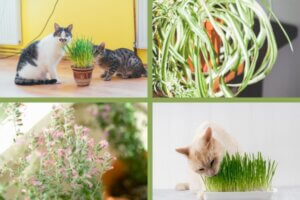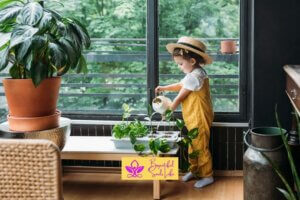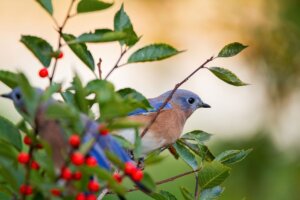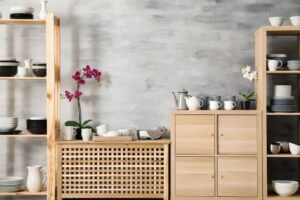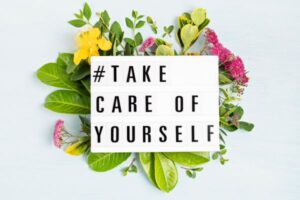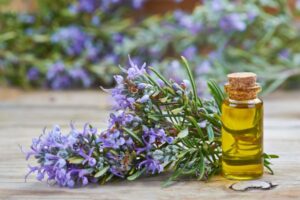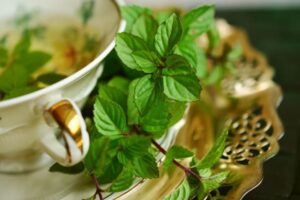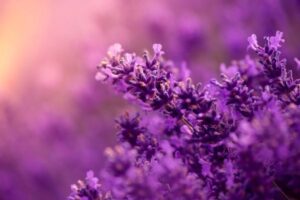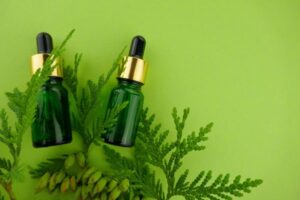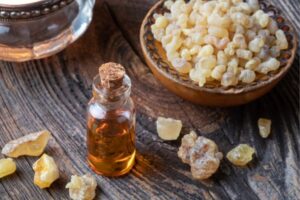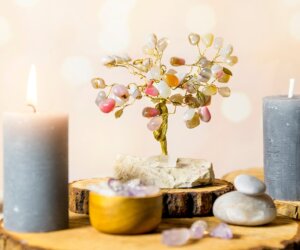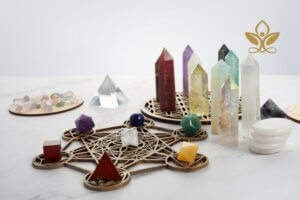Summer is here and we’re spending more time outside, but, we still need clean air inside our homes. So, let’s turn our attention to the house plants that we all love. There’s nothing like the smell of fresh air in our homes and there’s no more effective way of ensuring this than through cultivating the right house plants. To that end, this posts gives you 12 house plants and flowers to lower toxins and therefore lower stress in your environment.
Below is information about the varieties of common house plants, their uses, and benefits, along with some great images to inspire you! So, if you want to learn more about what house plants might be right for you and your family, continue reading for some great information.
12 House Plants and Flowers for Healthier Air in Your Home
How Do Green Plants Improve Air Quality?
Simply stated, plants take in all types of toxin substances from the air through the openings in their leaves. For instance, some plants can remove the most toxic elements such as formaldehyde, benzene, and carbon monoxide. This makes plants one of the best air filters money can buy for your home. One bonus is that there is no carbon footprint with these all-natural filters. An equally important bonus is that green plants emit healthy oxygen into our environment.
Which Plants Will You Select and Why?
Adding greenery to the home has long been a top recommendation to improve indoor air quality. Flowering plants are a beautiful living piece of home decor that brightens up any room. So now, let’s look at how they use their leaves and roots to pull harmful pollutants from the air.
How to Get Happy Healthy Breathable Air in Your Home Share on XI’d like to direct you to a case in point in which NASA conducted a study wherein one of their goals was to learn which plants worked best to remove toxins from the air in a closed environment. Because NASA has such a highly vested interest in finding answers to these questions for the crews on spacecrafts and stations, I tend to trust their conclusions.
In 1989, NASA environmental scientist B.C. “Bill” Wolverton published a report that looked towards the future of energy-efficient buildings and addressed the need for a way to remove pollutants from indoor air without increasing ventilation with outdoor air. (This stemmed from the need to address the lack of fresh air exchange in space stations.) His solution was to add a significant amount of houseplants to the indoor area, stating in his report that “plants can play a major role in the removal of organic chemicals from indoor air” (Wolverton, 1989).
VIA Molekule
Top Recommended House Plants
For clarity of use, I’ve included two lists below. One is for plants that are found to filter formaldehyde effectively and the next list is for plants that filter benzine effectively. I’ve also included images so that you can readily identify them when you go shopping for plants. I’d also like you to know that these are not the only toxins removed by these plants so if you want to know more specifics I recommend that you refer to the study listed in the quote above or do an online search for the specific house plant that you have in mind.
Green Plants that Absorb Formaldehyde
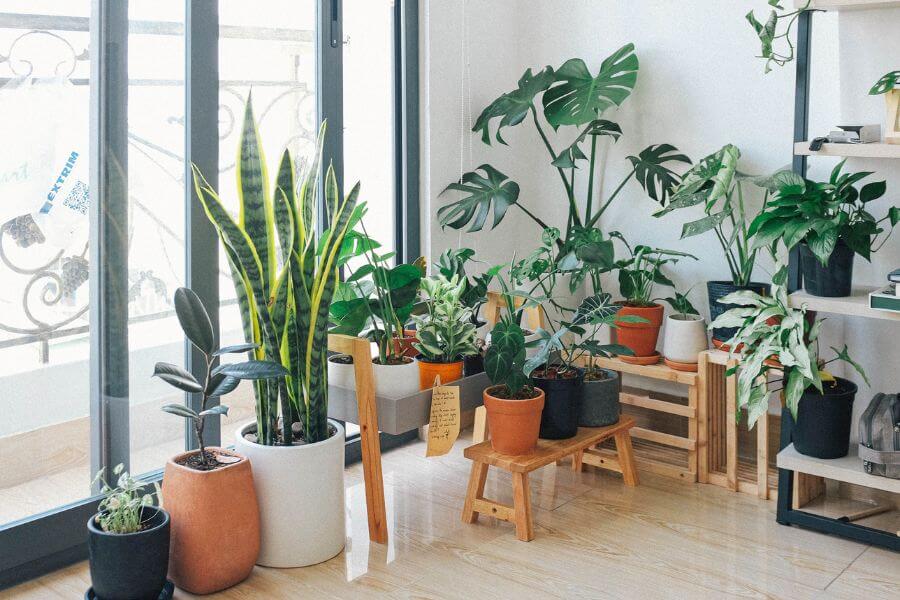
1. Heart Leaf Philodendron

The Heart Leaf or Sweetheart Philodendron has dark green leaves that shine nicely when they are kept clean. They work well as a hanging or floor plant as well as on top of bookshelves. They make a great house plant because they are actually difficult to kill. But, please be aware that all philodendrons are toxic to pets and children so take precautions where you place them.
2. Elephant Ear Philodendron

Philodendrons are among the most popular, tolerant, and durable of all house plants and the Elephant Ear Philodendron is no different. What all philodendrons all have in common is there ability to survive neglect and adverse conditions. For instance, they grow best in low light and you don’t want to put them in direct sunlight because that burns the leaves and stunts their growth. Therefore, it’s moderate light and moist soil for these beautiful plants.
3. Lacy-tree Philodendron

Also commonly known as the split-leaf philodendron or tree philodendron, Lacy-tree is a large tropical plant commonly grown as a house plant that reaches heights up to 15 feet with a similar spread. It is identified by its large leaves with deep cuts that are beautifully ruffled.
4. Green Spider Plant

Spider plants are also known as Airplane plants. These gorgeous plants grow in arches of grass clumps and have dangling “spider” baby plants that form on the end of the stems. Most people think they are the easiest to grow of all house plants so that makes them perfect for any home.
However, these plants do possess slight hallucinogenic properties that can be compared to catnip. Although it is listed as harmless on the American Society for the Prevention of Cruelty to Animals website, the toxins can still cause upset stomachs and diarrhea so keep them away from your pets, just to be safe. If you have a cat, you’ll want to keep them up high because they love the hallucinogenic effect and they love to play with the little “spiders”.
5. Golden Pothos

This is a very stable houseplant that only requires a balanced fertilizer application once per month. The Golden Pathos plant is toxic to both dogs and cats. So, you’ll want to keep them out of reach of the fur babies in your household.
6. Snake Plant

Snake plants are easy-peasy when it comes to their care. Simply set them in indirect sunlight and take it easy on the watering, especially during the winter months. It’s even best to let them dry out between watering. The entire plant is toxic, however, and will cause nausea, vomiting, and diarrhea if your dog or cat eats it, so place it carefully out of their reach.
7. Aloe Vera

I’ve treated many cuts and burns over the years from my former Aloe Vera plants that I am anxious to get started with a new plant now that I’m settling into my new place. These plants are very hardy and you can take them outside during warm weather, then, bring them in before winter arrives.
However, when you use these plants, be cautious about cutting away the skin of the plant and the inner layer of yellow juice which contains Aloin. You only want to use the actual gel. Unfortunately, the yellow juice is an irritant to some people because it contains latex. Also, the Aloin ingredient in Aloe Vera plants is a laxative so again, you want to take precautions to only use the gel found under those outer layers.
8. Peace Lily

The graceful Peace Lilies are easy to care for and tell you they need watering when you see them drooping. In addition to absorbing formaldehyde, they also are good for clearing carbon monoxide from the air. They are also a little bit toxic to pets, so be sure to wash your hands before playing with your pets.
Plants that Remove Benzene

1. Gerbera Daisy Flowers

The ability to filter benzene and trichloroethylene from the air is one of the qualities of these cheerful flowers. This pretty plant likes bright lights but be sure to keep its soil well-drained for best results. Your Gerbera will bloom from mid-Spring until Fall.
2. Chrysanthemum Flowers

I had no idea these beautiful and hardy flowers are also beneficial to our healthy homes. That’s because these flowers are natural filters to remove formaldehyde, benzene, and trichloroethylene from our environments.
Chrysanthemums were one of the top performers in the study for their ability to filter formaldehyde, benzene and trichloroethylene from the air (Wolverton, et. al, 1989). An additional study published in 1993 found that chrysanthemums were able to filter ammonia and xylene from the air as well (Wolverton & Wolverton, 1993).
VIA Molekule
You may grow these gorgeous flowers in bright, indirect sunlight. Give them water at room temperature and allow the soil to dry between watering. Fertilize before the blooming period and remove faded blooms to make your plant flower longer.
3. Dracaena Warneckeii

This lush and green air-purifying indoor house plant has lance-shaped leaves in grey-green with white, green, or grey stripes. These plants can be trimmed to size for use on tables, bushy floor plants, or tall plants. These plants are wonderful at removing toxins from the air but will make your fur babies and small children sick. It grows best in bright and indirect light but not direct sunlight and they love organic, loamy, peaty, well-drained soil.
4. Bamboo Palm

These plants rarely grow taller than 10 feet tall which is great for indoors. It normally reaches a height of about 7 feet and it doesn’t need full sun. Originating in Mexico and Honduras, this plant got its name from the long slender stems that resemble bamboo. The bamboo palm grows nicely in well-drained containers. This plant filters out benzene, trichloroethylene, and formaldehyde.
Here’s to your happy house plants and healthy breathable air.
With this information, I invite you to bring the outside in with house plants that remove toxins and improve the air we breathe. So, whether you go for gallons of greenery or a few well-placed plants, it is my heart’s desire that you have the most wonderful home full of fresh plants and breathable air.
Conclusion
It is our wish that you find this post enlightening and helpful. If you have any questions or suggestions, we love to hear from you in the comments below. Also, kindly accept our invitation to join our group on Facebook to surround yourself with kindred spirits and post your encouraging messages.


